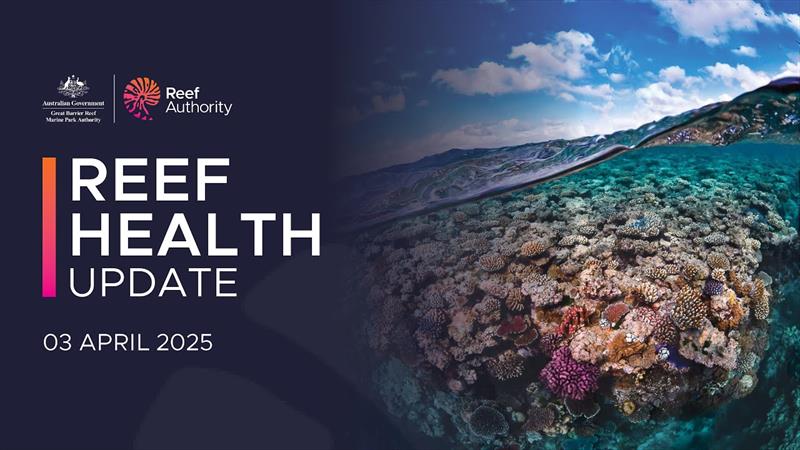
Great Barrier Reef Health update
by Great Barrier Reef Marine Park Authority 3 Apr 08:29 UTC
3 April 2025

Reef Health update | 03 April 2025 © Great Barrier Reef Marine Park Authority
As the lead managers of the Great Barrier Reef, the Reef Authority keeps an eye on the Reef year-round — with efforts stepped up over summer, a typically high-risk period from extreme weather.
The Reef Authority releases updates on the health of Reef which includes; sea surface temperatures, rainfall and floods, cyclones, crown-of-thorns starfish outbreaks, and coral disease.
These updates are based on forecasts, water temperature heat mapping, in-water surveys, citizen science and aerial surveys.
Reef Health update | 03 April 2025
In-water surveys to assess the impacts from heat stress and flood plumes are continuing with the Reef Joint Field Management Program team recently completing surveys of coral communities between Innisfail and Cooktown.
The Capricorn Bunker Group will be the focus of the in-water surveys in early April, with teams assessing the impacts of tropical cyclone Alfred.
Results from the aerial and in-water surveys are being processed and will be released in the Summer Reef Snapshot.
Sea surface temperatures have remained relatively stable across the Marine Park, with a slight increase in the Far Northern region, and slight decreases in the Northern and Central regions.
Temperatures
This week sea surface temperatures in the Far Northern region have increased by 0.1 degreesC to 1.4 degreesC above the long-term average for March while decreasing relative to the March average in both the Northern region, by 0.1 degreesC to 0.9 degreesC, and Central region, by 0.1 degreesC to 0.7 degreesC. Temperatures remained stable at 0.8 degreesC above the March average in the Southern region.
Sea surface temperatures across the Marine Park are forecast to remain between 0.7 degreesC to 1 degreesC above the long-term average for April.
Rainfall
The Bureau of Meteorology forecasts above average rainfall exceeding 100 mm for some catchment areas inshore of the Far Northern and Northern regions of the Marine Park during the next week. Rainfall totals should ease in the following week, although they are still forecast to be above average for April.
This could lead to continued flooding and freshwater intrusion in the Marine Park for the Far Northern and Northern regions. However, rainfall is forecast to be lower than usual over Far Northern and Northern Marine Park catchment areas in May.
Reef health
During the past fortnight (13-27 March), 261 Reef health impact surveys were conducted across the Marine Park with some bleaching detected on 23 of the 28 reefs (82%) surveyed.
Most reports from the Northern region were of low-level bleaching (1-10% prevalence), with some reports of medium (11-30% prevalence) to high-level (31-60%) bleaching.
In the Central region, most reports were of low (1-10% prevalence) to medium-level (11-30% prevalence) bleaching. No bleaching or low-level (1-10% prevalence) bleaching was reported from reefs in the Southern region. No in-water data were available for the Far Northern region during this survey period.
Crown-of-thorns starfish are at sustainable levels for coral growth and recovery on 112 of the 187 reefs targeted for culling (60%).
Outbreaks of these coral-eating starfish are impacting reefs throughout the Marine Park but are most severe in the Southern region (Swains Reefs) and between Port Douglas and Lizard Island. Cull operations are currently active at 43 reefs to suppress COTS outbreaks and protect coral.
Reef management
The Reef Authority works closely with the Queensland Parks and Wildlife Service as key data collectors in the Reef Joint Field Management Program as well as academic and management institutions and contractors to ensure access to contemporary data across the World Heritage Area.
Our management actions are geared towards building and supporting Reef resilience, including enforcing compliance with the Reef's zoning plan and ensuring people are enjoying the Reef in a responsible way.